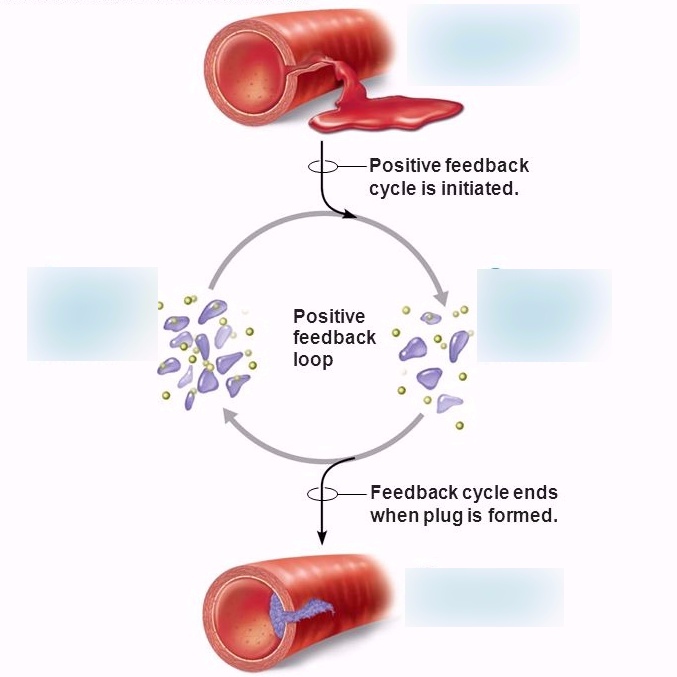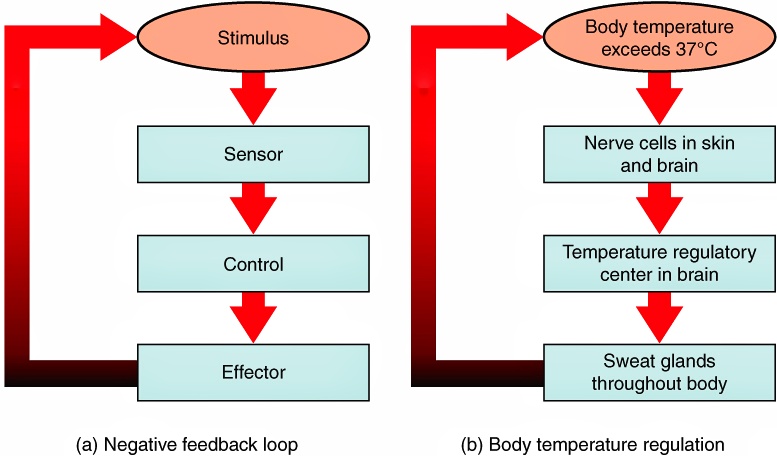cell injury : cell injury is define as the alteration is in the cellular funtion due to the variety of stress over the cell which is due to change in the external and internal environment of the cell.
Introduction to homeostasis: It is the state of steady internal physical and chemical condition maintained by living system.This dynamic state of equilibrium is the conditions of optimal funtioning for the organism and includes many variables such as body tempreture and fluid.
Adaptation; Adaptation refers to process by which a system seek to restore or maintain homeostasis. Adaptive mechanism may also be referred to as compensatory mechanism,homeostatic mechanism,control and regulatory mechanism although adaptation may be physiological, psychological, behavioural in systems terminology adaptive mechanism are example of feedback to the system may be represented by either negative or positive feedback loops.
Negative feedback Loop: nearly all physiologic adaptative responses are negative feedback loops. These processes to restore homeostasis by including changes in the opposite direction of a force perturbing the system. Example; Homeostasis are temperature control is vital to the maintenance of homeostasis with in the body. It is sensed by thermoregulators in both the skin and hypothalamus. The internal temperature is sensed by the hypothalamus and external temperature is sensed by the skin. When the external temperature outside is too cold, message are sent from the many thermoreceptors located with in the skin, to the cerebellum leading to the hypothalamus. The role of cerebellum is to make the individual aware of feeling cold which may cause voluntary behavioral changes such as putting on more layer of clothing or coat.
Other Examples are:
Thermoregulation : If the body temperature changes, mechanism are induced to restore normal levels.
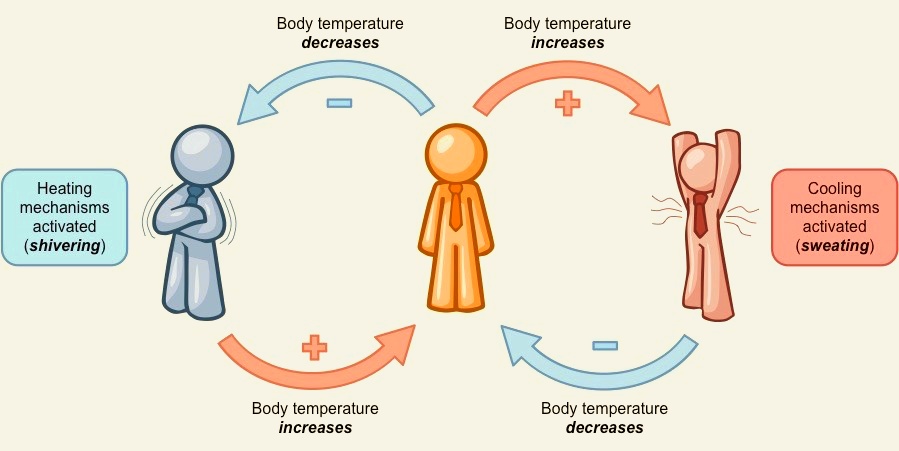
Blood sugar regulation: Insulin lowers blood glucose when levels are high, glucagon raises blood glucose when levels are low.
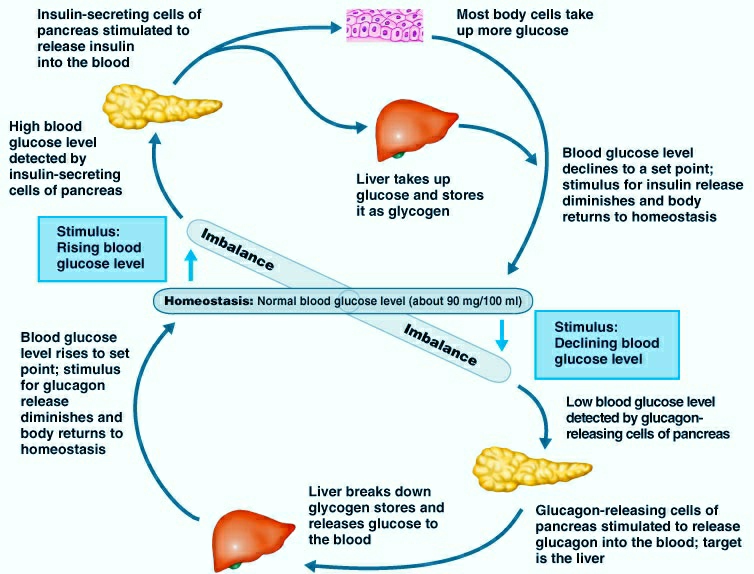
Osmoregulation : ADH is secreted to retain water when dehydrated and it’s release is inhibited when the body is hydrated.
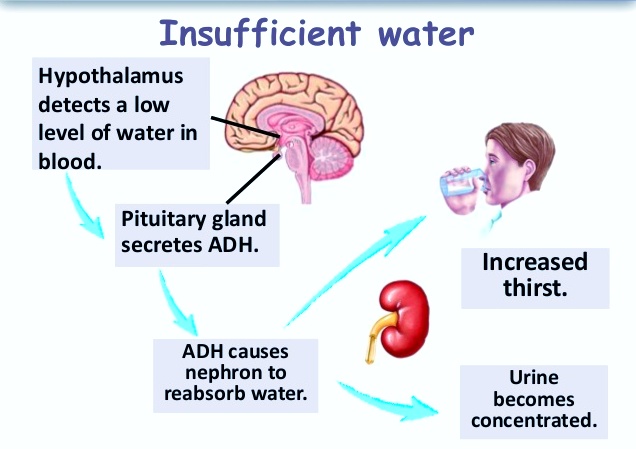
Sex Hormones: The synthesis and release of sex hormones is regulated by negative feedback mechanism.
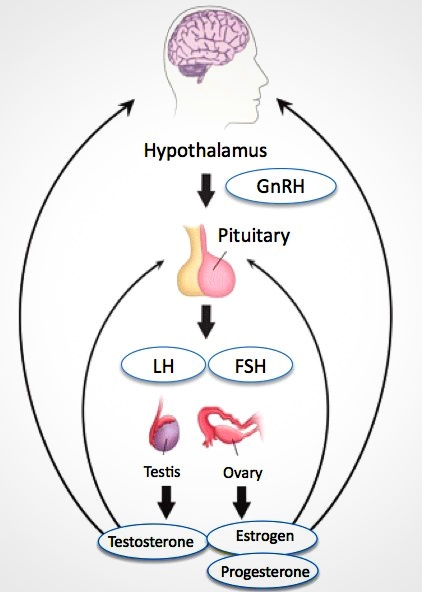
Positive feedback loop : The response to disruptive forces is in the same direction as the force, thus tending to increase the instability of the system. Example: contraction of uterine during childbirth; when contraction start, oxytocin is released which stimulates more contraction and more oxytocin is released hence contraction increase in intensity and frequency.
Other examples are;
Lactation: The child feeding stimulates milk production which causes further feeding. Producing of milk from mother is by release of oxytocin.
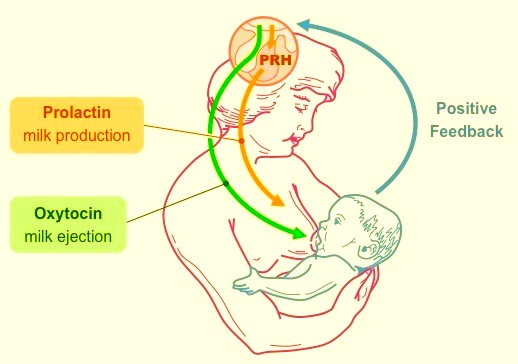
Ovulation: The dominant follicles releases oestrogen which stimulates LH(Luteinizing Hormone) and FSH(follicle stimulating hormone) release to promote further follicular growth.
Blood Clotting: platelets release clotting factors which cause more platelets to aggregate at the site of injury and reduce the blood flow from site of injury.
